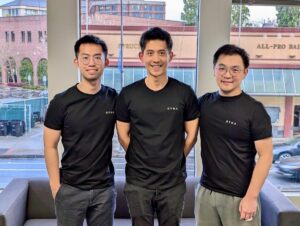DeepMind to Utilize AI Models for Enhancing Physical Robots

Google’s DeepMind: Advancing Robotics with AI
Google’s DeepMind has recently announced its plans to utilize artificial intelligence (AI) models to enhance the capabilities of physical robots. This development marks a significant step in the integration of AI and robotics, as it opens new possibilities for automating tasks across various industries.
Understanding DeepMind’s AI Models
DeepMind, a subsidiary of Alphabet Inc. and renowned for its breakthroughs in AI research, is harnessing the power of advanced AI models for robotic applications. These models are designed to improve the learning and decision-making processes in robots, enabling them to perform tasks more efficiently and effectively.
Key Features of DeepMind’s AI Models
- Reinforcement Learning: This method allows robots to learn from their experiences and adapt to new challenges over time. By receiving feedback on their actions, robots can optimize their performance.
- Neural Networks: DeepMind employs complex neural networks that mimic human brain functions. This technology enables machines to recognize patterns, make predictions, and problem-solve in dynamic environments.
- Generative Models: These models can create new data points based on existing information, enabling robots to generate solutions and plan actions in unpredictable situations.
Impact on Physical Robots
The integration of AI into physical robots has transformative potential across several sectors, including manufacturing, healthcare, agriculture, and logistics. Here are some key areas where these advancements are making a difference:
1. Manufacturing
- Automation of Tasks: AI-powered robots can streamline assembly lines, increasing productivity and reducing human error.
- Maintenance Predictions: Machine learning algorithms can predict equipment failures, allowing for timely maintenance and minimizing downtime.
2. Healthcare
- Surgical Assistance: Robots guided by AI can enhance precision during surgeries, potentially improving patient outcomes.
- Patient Care: AI-driven robots can assist in monitoring patients and providing companionship, improving the overall healthcare experience.
3. Agriculture
- Precision Farming: Robotics equipped with AI can optimize planting, watering, and harvesting, leading to better crop yields and resource management.
- Pest Control: Autonomous robots can identify and eliminate pests more efficiently than traditional methods.
4. Logistics
- Warehouse Automation: AI robots can manage inventory, pick items, and pack shipments, significantly improving the supply chain process.
- Delivery Services: Companies are exploring the use of AI-driven drones and delivery robots to enhance last-mile logistics.
Challenges in Implementing AI in Robotics
While the benefits of AI-integrated robots are significant, there are challenges that developers and businesses must address:
1. Safety and Reliability
Ensuring that robots can safely interact with humans and other machines is crucial. Rigorous testing and regulation are needed to prevent accidents and ensure reliability in diverse environments.
2. Ethical Considerations
As robots become more autonomous, concerns regarding their decision-making processes arise. Establishing ethical guidelines for AI behavior and accountability is crucial as these technologies develop.
3. Technical Limitations
Many robotics systems still face issues such as limited battery life, navigation challenges in complex environments, and the need for advanced sensors to function optimally.
Future of AI in Robotics
As Google’s DeepMind continues to innovate, the future of robotics looks promising with AI at its forefront. Ongoing research aims to develop smarter, more autonomous robots capable of tackling more complex tasks and operating in diverse settings. The fusion of AI and robotics is likely to lead to breakthroughs that could revolutionize industries and enhance our daily lives in ways we are only beginning to comprehend.
With investments from tech giants and a surge in interest from various sectors, we can expect to witness substantial evolution in robot capabilities in the coming years. The journey of robotics powered by AI is one that has just begun, with endless possibilities on the horizon.






